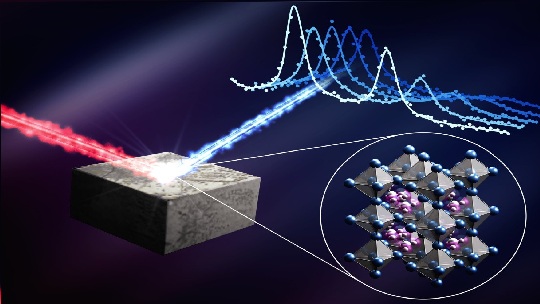
Perovskite is considered one of the foremost promising materials of the twenty-first century. Within the past few decades, the perovskite has pulled in wide consideration and made incredible advance in vitality capacity, poison debasement as well as optoelectronic devices due to its prevalent photoelectric and catalytic properties. All materials with ABX3 structure are collectively alluded to as perovskite materials, which can be simply divided into inorganic perovskite and organic-inorganic hybrid perovskite.
This article presents applications of perovskite materials such as energy storage devices, photovoltaics, electrocatalysis, electronic devices, photocatalysts, sensing, and biomedical instruments. Monitoring the emergence of emerging advances makes difference supervisors and choice creators to recognize advancement trends in rising advances is significant for government research and development (R&D), strategic planning, social investment, and enterprise practices.
Perovskite materials exhibit many interesting and intriguing properties from both the theoretical
and the application point of view.

Top figure show top 10 cpc codes in perovskite material patents and it exhibits different applications of perovskite materials. In the following, some of them will be examined.
Supercapacitor: Sr-doped lanthanum manganite perovskite (La1-xSrxMnO3, LSM) as electrode materials for supercapacitor were prepared via an improved sol-gel method. Such as (Ba,Sr)TiO3 and Pb(Zr,Ti)O3 ideally suited for a wide range of capacitor applications, particularly decoupling capacitors and tunable microwave capacitors; the latter application has been fueled by the recent explosion in wireless communications.
Fuel cells: perovskite oxides have substantial role in the sustainable energy delivery as reflected by their applicability as oxygen-transporting membranes (OTMs), as electrode/electrolyte components in solid oxide fuel cells (SOFCs), and as OTM-based reactors. These applications represent three major directions that enable the membrane-based oxy-fuel combustion technology, the clean and efficient chemical to electrical energy conversion, and the production of higher value-added chemicals from lower value raw materials. Perovskite oxides exhibited fascinating properties like good electrical conductivity similar to that of metals, high ionic conductivity, and perfect mixed ionic and electronic conductivity. Depending on the differences in the electrical conductive characteristics of perovskites, they are chosen as an effective component in SOFC.
Catalytic: perovskite oxides can be widely used as catalyst in modern chemical industry, exhibiting appropriate solid-state, surface, and morphological properties [6]. Several perovskites exhibited enhanced catalytic activity toward different reactions like hydrogen evolution and oxygen evolution and reduction reactions.
Optoelectronic: perovskite materials can be widely used as optical absorption and active layer in differences optoelectronic devices such as: solar cells, photodiodes, optical sensors and x-ray detectors.
Sensor: perovskite materials with various functionalities such as piezoelectric, dielectric, ferroelectric, semiconducting, and light-sensitive properties are of great interest for sensor and detector application.






